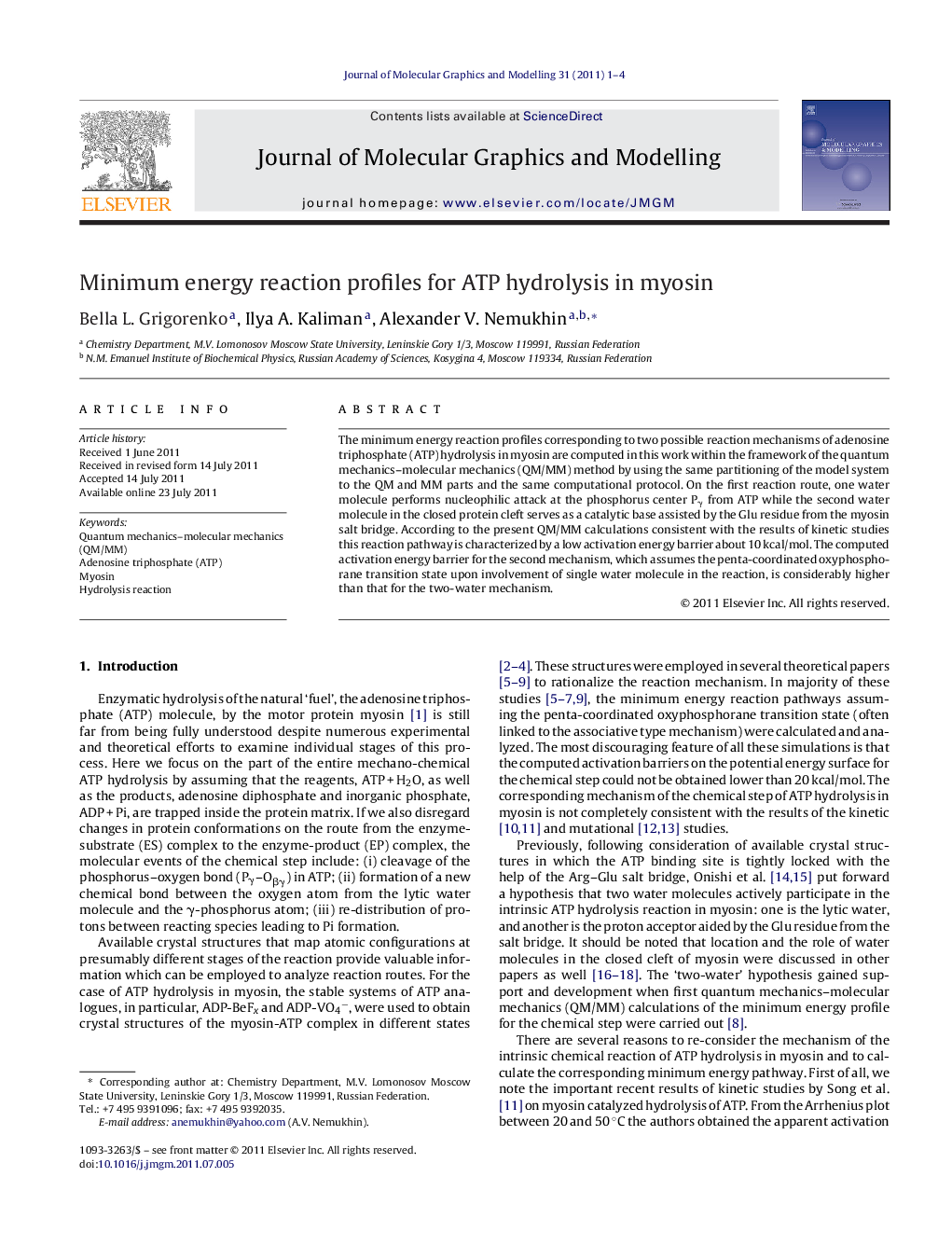| Article ID | Journal | Published Year | Pages | File Type |
|---|---|---|---|---|
| 443722 | Journal of Molecular Graphics and Modelling | 2011 | 4 Pages |
The minimum energy reaction profiles corresponding to two possible reaction mechanisms of adenosine triphosphate (ATP) hydrolysis in myosin are computed in this work within the framework of the quantum mechanics–molecular mechanics (QM/MM) method by using the same partitioning of the model system to the QM and MM parts and the same computational protocol. On the first reaction route, one water molecule performs nucleophilic attack at the phosphorus center Pγ from ATP while the second water molecule in the closed protein cleft serves as a catalytic base assisted by the Glu residue from the myosin salt bridge. According to the present QM/MM calculations consistent with the results of kinetic studies this reaction pathway is characterized by a low activation energy barrier about 10 kcal/mol. The computed activation energy barrier for the second mechanism, which assumes the penta-coordinated oxyphosphorane transition state upon involvement of single water molecule in the reaction, is considerably higher than that for the two-water mechanism.
Graphical abstractFigure optionsDownload full-size imageDownload high-quality image (198 K)Download as PowerPoint slideHighlights► We modeled minimum energy reaction profiles for ATP hydrolysis in the closed form of myosin. ► We used quantum mechanics–molecular mechanics (QM/MM) method for calculations. ► We conclude that the chemical step of the ATP hydrolysis is consistent with the two-water mechanism.
